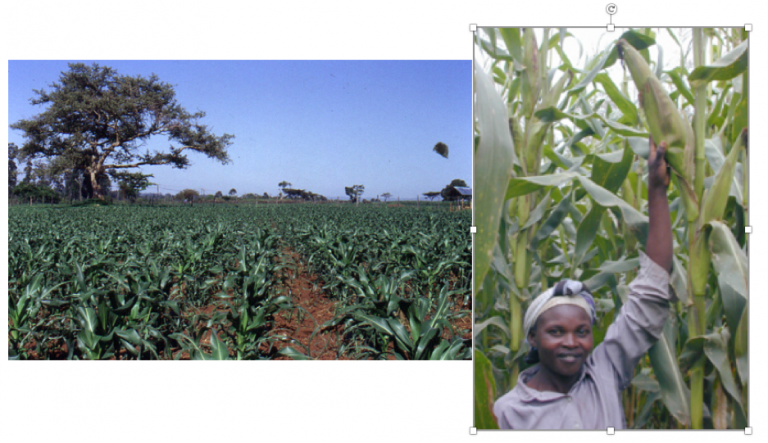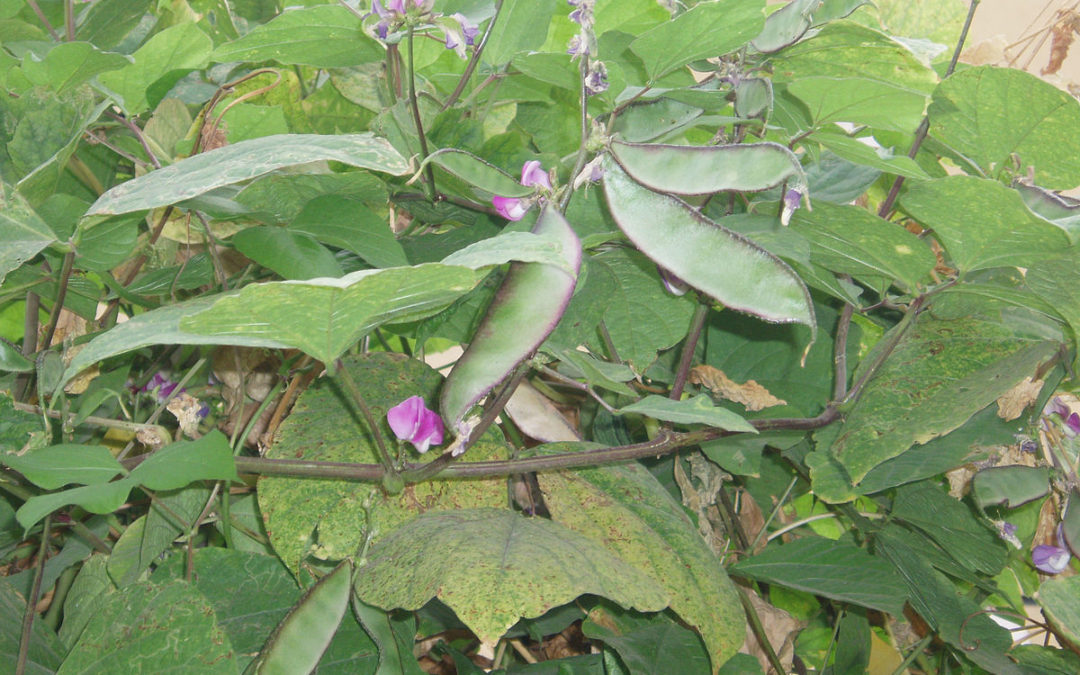Medium- and late-maturing lablab varieties are good nitrogen fixers. A vigorous crop can fix up to 150 kg N/ha (Ojiem, PhD research) and greatly boost productivity of a subsequently sown, heavy- feeding crop.
Lablab also produces lots of residue in the form of litter, stems and roots. This increases particulate organic matter (POM), which cycles through the soil food web and helps create healthy soils. In soils with low levels of available P, high residue production is good for getting P to cycle organically.
Grain legumes that are high yielding but produce little residue do not offer the same benefits. Plant breeders have redesigned their “improved” varieties to push their nutrients into the grain. This comes at the expense of sustainable soil management, since they take more from the soil than they give back.

Lablab fertilizer value: A maize crop grown solely on Rongai lablab residues in Trans Nzoia County. The lablab crop was grown over the dry season and all the grain was harvested. But there was still plenty of fixed N left over for the next crop., as seen from the deep green color of the maize and the cob size.


Recent Comments